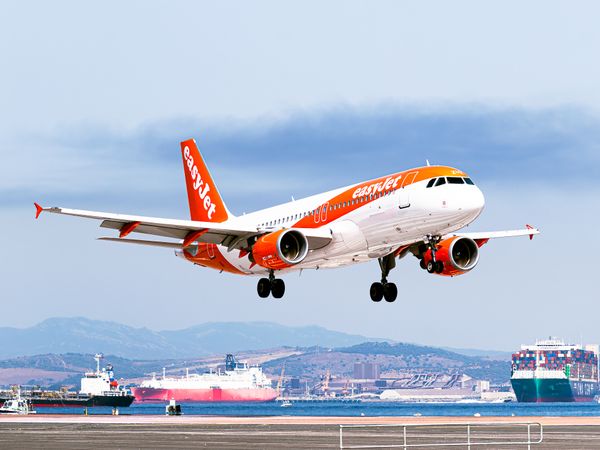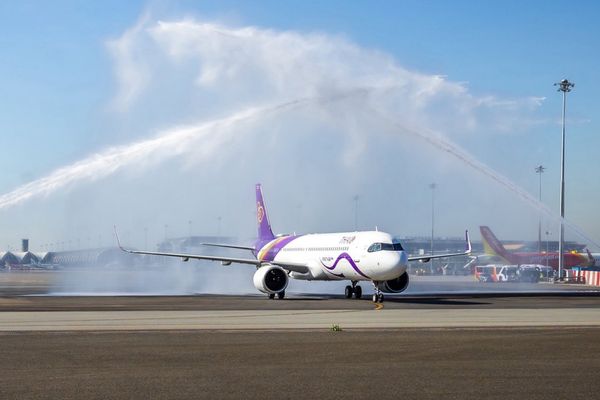In a groundbreaking move towards a sustainable future in aviation, Swiss startup Sirius Aviation AG has unveiled the world's first hydrogen-powered Vertical Take-Off and Landing (VTOL) aircraft – the Sirius Jet. Crafted in collaboration with BMW's Designworks and Sauber Group, this innovation is poised to reshape the air travel landscape.
.jpeg)
The Sirius Jet represents a major milestone in sustainable aviation, emphasizing Sirius Aviation AG's unwavering commitment to innovation, environmental responsibility, and safety. This high-performance VTOL aircraft boasts a zero-emission hydrogen-electric propulsion system, making it a game-changer in the aviation industry.
Blending the aerodynamics of a jet with the versatility of an airplane and helicopter, the Sirius Jet achieves extended flight distances, impressive speeds, and high altitudes while operating at near-silent noise levels. This technological marvel is set to take flight in 2025 in two distinct versions – the Sirius Business Jet and the Sirius Millennium Jet- catering to private and commercial aviation needs.
.jpeg)
Sirius Jet Specifications:
Sirius Business Jet:
- Zero-emission, hydrogen-powered VTOL business jet.
- 1,150-mile flight range.
- Cruise speed of 323 mph.
- Altitude capability of 30,000 feet.
- Ultra-quiet noise levels of 60dBa.
- Accommodates three passengers.
Sirius Millennium Jet:
- Zero-emission, hydrogen-powered VTOL commercial aircraft.
- 650-mile flight range.
- Cruise speed of 323 mph.
- Altitude capability of 30,000 feet.
- Sound footprint of 60dBa.
- Accommodates up to five passengers.
.jpeg)
Benefits of the Sirius Jet
The Sirius Business Jet, tailored for private jet needs, and the Sirius Millennium Jet, designed for commercial aviation, symbolize a paradigm shift towards environmentally conscious air transportation. With a focus on reducing carbon footprints and embracing green technology, Sirius Aviation AG aims to pave the way for a more sustainable aviation industry.
Furthermore, the partnerships with global leaders such as BMW Group's DesignWorks, Sauber Group, Alfleth Engineering AG, and ALD Group contribute to the aircraft's innovative design and efficient performance. The collaboration leverages expertise from various fields, merging automotive design prowess, Formula 1 excellence, engineering precision, and advanced propulsion technology.
As the aviation industry grapples with the environmental challenges posed by traditional fuel sources, the Sirius Jet emerges as a beacon of change. Its revolutionary approach to harnessing hydrogen power offers extended flight ranges and impressive speeds and positions hydrogen as a key player in the quest for sustainable aviation solutions.
.jpg)
The upcoming event at Payerne Airport on January 17, 2024, promises the public unveiling of the Sirius Jet and a deeper exploration of the aircraft's technological features. The hydrogen-electric ducted fan propulsion system, set to be revealed during the event, is anticipated to provide a glimpse into the future of propulsion technology, emphasizing the significance of hydrogen as a clean and efficient energy source.
Sirius Aviation AG's commitment to safety is evident in the ultra-quiet noise levels of the Sirius Jet, addressing concerns about noise pollution associated with traditional aircraft. The aircraft's ability to comfortably accommodate passengers while minimizing its environmental impact showcases a balanced approach to aviation innovation.
The Sirius Jet is a leap forward in aviation technology and a commitment to a sustainable and eco-friendly future. As the world looks towards cleaner and greener alternatives, Sirius Aviation AG stands at the forefront, ready to redefine the skies with its hydrogen-powered VTOL aircraft, setting a precedent for a new era in sustainable aviation.
World’s Most On-Time Airlines and Airports of 2025 » JetBlue Expands Midwest Footprint with New Daily Service Between New York-JFK and Cleveland » How Guides Can Manage Seasonal Demand and Last-Minute Bookings With Better Planning Tools »
Comments (0)
Add Your Comment
SHARE
TAGS
STORIES Sirius eVTOL Future Innovation Technology Hydroelectric Electric Sustainability Sustainable AviationRECENTLY PUBLISHED
 EasyJet Airbus A320 Emergency Landing at Lamezia Terme
easyJet Europe Airbus A320-200 was involved in a serious aviation incident on the morning of December 27, 2025, after suffering an uncontained engine failure during its descent into Lamezia Terme International Airport (SUF).
INFORMATIONAL
READ MORE »
EasyJet Airbus A320 Emergency Landing at Lamezia Terme
easyJet Europe Airbus A320-200 was involved in a serious aviation incident on the morning of December 27, 2025, after suffering an uncontained engine failure during its descent into Lamezia Terme International Airport (SUF).
INFORMATIONAL
READ MORE »
 World’s Most On-Time Airlines and Airports of 2025
Precision and operational excellence took centre stage today as Cirium, the global leader in aviation analytics, released its highly anticipated 2025 On-Time Performance (OTP) Review. In a year defined by surging passenger demand and complex airspace constraints, Aeromexico has emerged as the world’s most punctual global airline for the second consecutive year.
NEWS
READ MORE »
World’s Most On-Time Airlines and Airports of 2025
Precision and operational excellence took centre stage today as Cirium, the global leader in aviation analytics, released its highly anticipated 2025 On-Time Performance (OTP) Review. In a year defined by surging passenger demand and complex airspace constraints, Aeromexico has emerged as the world’s most punctual global airline for the second consecutive year.
NEWS
READ MORE »
 Thai Airways Welcomes First Airbus A321neo
Thai Airways International (THAI) has officially ushered in a new chapter for its regional operations with the delivery of its first Airbus A321neo. The aircraft, registered as HS-TOA and christened with the royal name "Bowonrangsi," touched down at Bangkok Suvarnabhumi Airport (BKK) following a delivery flight from Hamburg via Dubai in late December 2025.
ROUTES
READ MORE »
Thai Airways Welcomes First Airbus A321neo
Thai Airways International (THAI) has officially ushered in a new chapter for its regional operations with the delivery of its first Airbus A321neo. The aircraft, registered as HS-TOA and christened with the royal name "Bowonrangsi," touched down at Bangkok Suvarnabhumi Airport (BKK) following a delivery flight from Hamburg via Dubai in late December 2025.
ROUTES
READ MORE »



